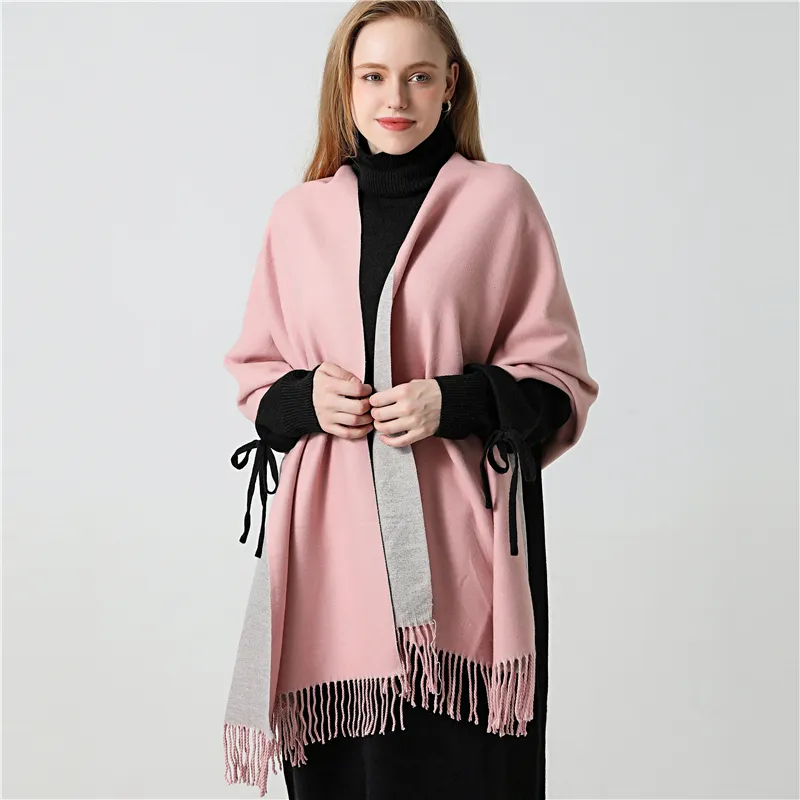
These are not merely accessories; they are essential pieces of winter wear that combine style, warmth, and functionality. As temperatures drop, a well-chosen scarf can keep you cozy while adding a touch of elegance to your winter outfits. However, with countless options available, selecting the right winter scarf can be a daunting task. In this comprehensive guide, we’ll explore the world of winter scarves, covering factors such as materials, styles, lengths, colors, and care, to help you choose the perfect scarf that complements your winter wardrobe and keeps you snug during the colder months.
The Importance of Choosing the Right Winter Scarf
Before we delve into the specifics of choosing a winter scarf, it’s essential to understand why this accessory is crucial:
- Warmth: Winter scarves provide insulation and warmth for your neck and upper chest, helping you stay comfortable in chilly weather.
- Fashion: Scarves are versatile fashion accessories that can elevate your winter outfits, add a pop of color, or serve as a stylish focal point.
- Functionality: Beyond fashion, scarves can be functional. They can be draped in different ways to protect your face from cold winds or snowfall.
- Comfort: A well-chosen scarf can make the difference between feeling snug and suffering from the cold. The right scarf can keep you warm and comfortable during winter’s coldest days.
Now, let’s explore the factors to consider when selecting the perfect winter scarf.
Factors to Consider When Choosing a Winter Scarf
1. Materials
The choice of material significantly impacts the warmth, texture, and style of your winter scarf. Common scarf materials include:
- Wool: Wool scarves are excellent insulators and provide exceptional warmth. Merino wool is soft and less scratchy than regular wool.
- Cashmere: Cashmere scarves are known for their luxurious softness and warmth. They are lightweight yet incredibly cozy.
- Acrylic: Acrylic scarves are affordable and can mimic the look and feel of natural fibers. They are easy to care for and come in various styles and colors.
- Silk: Silk scarves add a touch of elegance and sophistication to your winter ensemble. While not as warm as wool or cashmere, they are suitable for milder winter days.
- Fleece: Fleece scarves are exceptionally warm and soft, making them an excellent choice for extreme cold.
- Blends: Some scarves are made from a blend of materials, such as wool and acrylic or cashmere and silk, to offer a balance of warmth and softness.
Consider your climate, personal preferences, and any potential skin sensitivities when choosing the material for your winter scarf.
2. Styles
Winter scarves come in various styles, each with its unique look and functionality:
- Rectangular Scarves: Rectangular scarves are the most common and versatile. They can be worn long or wrapped around the neck for added warmth.
- Infinity Scarves: Infinity scarves are circular and have no loose ends. They can be looped around the neck for a cozy, layered look.
- Blanket Scarves: Blanket scarves are oversized and offer maximum warmth. They can be draped like a shawl or worn as a traditional scarf.
- Snood Scarves: Snood scarves are similar to infinity scarves but are often thicker and can be pulled up to cover the lower part of the face.
- Pashmina Scarves: Pashmina scarves are traditionally made from fine cashmere wool and are known for their softness and elegance.
- Balaclava Scarves: Balaclava scarves cover the head, neck, and face, providing exceptional protection from cold winds and snow.
Choose a style that suits your personal taste and the level of warmth and coverage you need.
3. Lengths
The length of a scarf can impact how it is worn and its overall warmth. Consider these common scarf lengths:
- Short Scarves: Short scarves are typically around 55-65 inches long and are suitable for draping around the neck once or twice.
- Medium Scarves: Medium scarves range from 70-80 inches in length and allow for various draping and wrapping styles.
- Long Scarves: Long scarves, usually 85-100 inches long, provide extra length for multiple wraps, making them ideal for extreme cold.
- Extra-Long Scarves: Extra-long scarves can exceed 100 inches and are perfect for creative and layered styling.
The choice of length should be based on your height, style preferences, and the desired level of coverage and warmth.
4. Colors and Patterns
Scarves come in a vast array of colors and patterns, allowing you to express your style and complement your winter wardrobe. Consider the following:
- Neutral Colors: Neutral shades like black, gray, brown, and navy are versatile and easy to match with various outfits.
- Bright Colors: Vibrant hues like red, orange, or bright blue can add a pop of color and make a statement.
- Patterns: Scarves can feature patterns such as stripes, checks, plaids, or animal prints, offering a range of style choices.
- Solid Colors: Solid-colored scarves are timeless and can be paired with almost any outfit.
Select colors and patterns that resonate with your personal style and complement your winter wardrobe.
5. Care and Maintenance
To ensure the longevity and beauty of your winter scarf, follow these care and maintenance tips:
- Read Care Labels: Pay attention to care labels and follow the manufacturer’s washing and care instructions.
- Hand Washing: Many delicate scarves, such as cashmere or silk, should be hand washed using a gentle detergent and cold water. Avoid wringing or twisting to prevent damage.
- Machine Washing: Some scarves, especially those made from acrylic or fleece, may be machine washable. Use a delicate cycle and a laundry bag to protect them.
- Storage: Store your scarves in a cool, dry place, away from direct sunlight. Avoid hanging them, as this can cause stretching.
- Avoid Snags: Be mindful of sharp jewelry or accessories that can snag delicate scarf materials.
- Pilling: To prevent pilling on wool or cashmere scarves, store them folded, and use a fabric shaver to remove any pills.
In Conclusion
Choosing the perfect winter scarf involves considering materials, styles, lengths, colors, and care to match your preferences and winter needs. A well-chosen scarf not only keeps you warm but also adds an element of style and personality to your winter attire. Whether you prefer a classic wool scarf, an oversized blanket scarf, or a luxurious cashmere option, your winter scarf can be a versatile accessory that enhances your comfort and fashion during the coldest months of the year.


